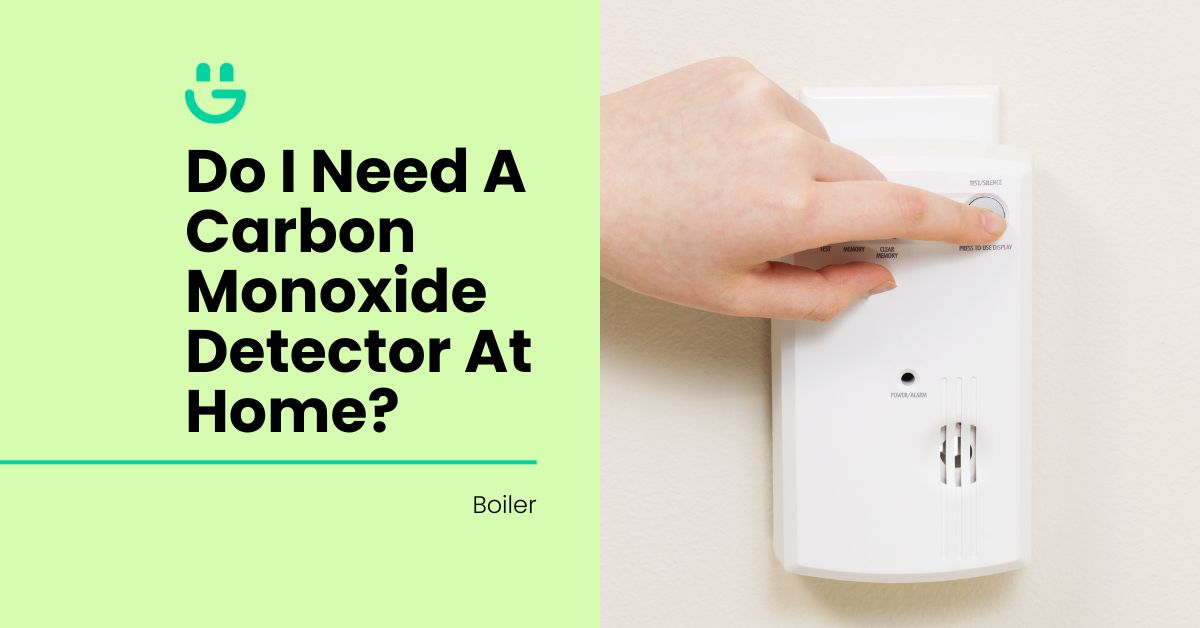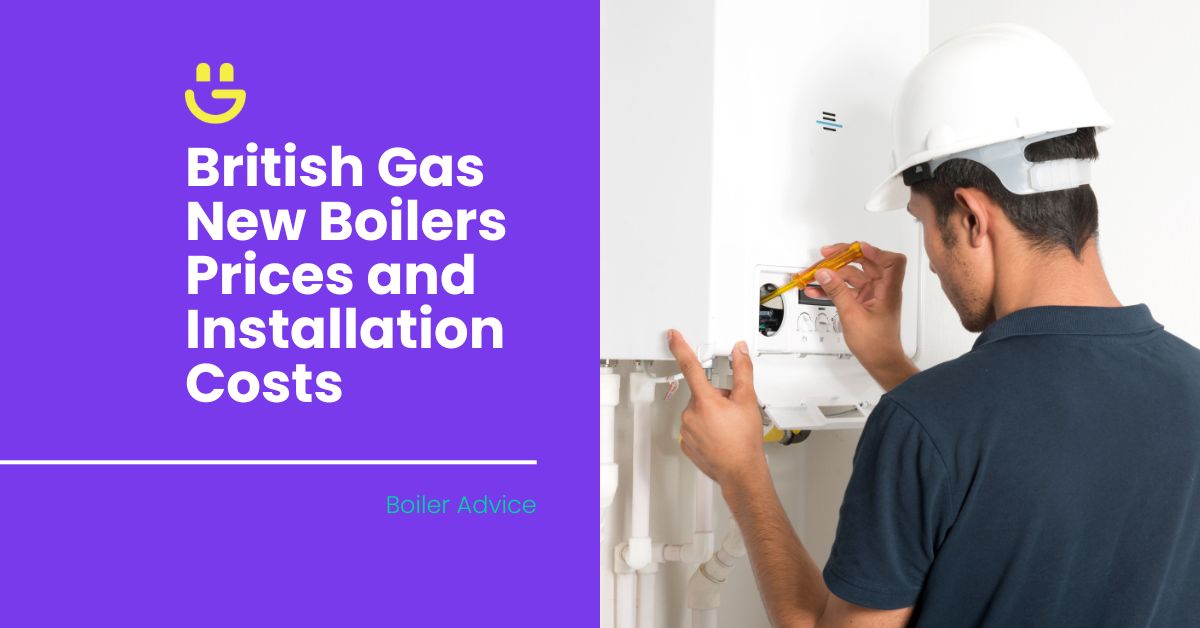Last Updated on November 14, 2025
Carbon monoxide is a potentially lethal gas. If inhaled in excessive amounts, it can lead to carbon monoxide poisoning resulting in various health complications, and even death.
The gas is colourless, odourless, and tasteless, and produced by faulty fuel-burning appliances. Because its presence is difficult to detect, all homes using gas appliances must have a carbon monoxide detector installed.
Continue reading Eco Happy‘s guide to learn about the importance of carbon monoxide detectors, relevant legal requirements, and the safety measures you can implement to protect your family from this silent killer.
Contents
Understanding Carbon Monoxide
Before we discuss carbon monoxide poisoning and how you can keep your family safe, let’s take a look at the basics:
Carbon monoxide (CO) is produced when gas, wood, or oil in fuel-consuming appliances burns incompletely. This poisonous gas is released naturally (during volcanic eruptions and forest fires) and in other processes like burning fuel in a gas boiler, gas fire heater, or car engine.
In homes, it’s produced by incorrectly installed, faulty, or poorly maintained appliances and fuel-burning devices such as:
- Gas boilers and cookers
- Paraffin or gas heaters
- In fireplaces using gas, wood, and coal
- Portable generators
- Gas barbeques or camping stoves
- Vehicle or lawn mower engines
Your home can also experience a build-up of CO when vents, flues, and chimneys are blocked.
Carbon monoxide and gas appliances
Faulty gas appliances can produce carbon monoxide if their fuel source is not completely burned due to a lack of oxygen during combustion. Therefore, homeowners must adhere to gas appliance safety regulations and regularly service their devices to ensure they are installed correctly and functioning properly.
It’s recommended that these appliances are serviced annually to check for CO production and leaks, thus helping prevent carbon monoxide poisoning.
Legal requirements
In the UK, the legal requirements for CO detectors have been in place since October 2022.
These requirements make it mandatory that homeowners fit a carbon monoxide detector when installing or replacing a gas or wood-burning appliance in all private, rented, and social housing scheme buildings.
Homeowners and landlords are also tasked with appointing a Gas Safe registered engineer to service and check permanent and/or portable gas appliances and gas flues for correct installation and defects.
Dangers of carbon monoxide
Next, let’s discuss the dangers of CO and the potential consequences of inhaling the gas:
- How does carbon monoxide affect the human body? Carbon monoxide gas molecules have a strong affinity to connect to heme molecules (a compound in haemoglobin, present in our red blood cells), thus reducing the body’s oxygen absorption and carrying abilities.
- The organs most affected by CO inhalation include the brain, heart, and nervous system.
CO poisoning can lead to headaches, nausea, and feeling tired or confused. In cases of severe exposure, patients can collapse, lose consciousness, suffer long-term health consequences and even die.
Because they are similar to flu symptoms, one must first check for CO exposure if you have a gas appliance installed in your home.
Symptoms and emergency actions
The severity of your symptoms depends on how much CO you have been exposed to.
The most telling symptoms of CO exposure include:
- Light to severe headaches
- Feeling dizzy
- Weakness
- Chest pain
- An upset stomach
- Nausea and vomiting
- Disorientation and confusion
- Loss of consciousness (in severe cases)
What to do if you suspect a leak:
If you suspect that your gas or wood-fired appliance is leaking CO, follow these steps:
- Immediately stop using the appliance that is the source of the leak.
- Open all windows and doors to allow fresh, oxygen-rich air into the room.
- Step outside and ask all family members to go outside into the open.
- Get immediate medical help, especially if you have symptoms of carbon monoxide poisoning.
- Contact the 24/7 National Gas Helpline immediately on 0800 111 999.
Disclaimer: This article is for general informational purposes only. It is not a substitute for professional advice and should serve only as a guide when you suspect a carbon monoxide leak and exposure. Always consult a relevant professional, such as emergency services or a qualified technician, for advice and assistance.
Choosing The Right Carbon Monoxide Detector
Next, let’s look at selecting the correct carbon monoxide detector for your home:
Types of carbon monoxide detectors
There are two main types of devices to help detect carbon monoxide:
- Audible CO alarms: We are all familiar with smoke alarms sounding an alert when they detect smoke in a building. A smoke detector uses its built-in alarm to notify you of a possible fire. In the same way, a carbon monoxide alarm’s built-in monitor can detect carbon monoxide. These carbon monoxide alarms let out a loud beep to warn residents of carbon monoxide exposure.
- Patch CO detectors: Unlike a carbon monoxide detector, a patch CO detector does not have a built-in/audible alarm. These carbon monoxide detectors use a colour-changing patch to indicate the presence of carbon monoxide in a room.
Some CO alarms are battery-powered, while others are AC-powered.
Avoid buying and installing patch CO detectors as they do not emit an audible warning, which can be dangerous when you are asleep and exposed to carbon monoxide.
Key features to look for
Use the following criteria to select a CO alarm:
- In the UK, all carbon monoxide alarms should have a British or European standards certification or approval mark.
- Choose a carbon monoxide alarm that is marked British Standard (BS) EN 50291. Use an EN 50291-1:2018-marked alarm for domestic premises and an EN 50291-2:2010-marked device in your home, boat, or caravan.
- Select an alarm with a Kitemark certification. This certification confirms that your device has been tested for quality and efficiency.
- Choose a carbon monoxide alarm with a minimum battery life of five years.
Placement And Installation
Use these guidelines to install your carbon monoxide detector:
- Read the manufacturer’s manual to learn about the device’s installation, usage, testing, and when it needs a service.
- Install a CO detector in every room with a fuel-burning device installed or a flue.
- Place the alarm a maximum of three meters away from the fuel-burning appliance. If fitted on a ceiling, place the alarm 30 cm away from walls and light fixtures.
- Do not fit your alarm next to doors, windows, or fans.
- Avoid installing a carbon monoxide alarm in an enclosed space (inside a cupboard) or behind furniture and curtains. Also, do not install an alarm near a cooker hob or extractor fan.
Installation process
Follow these easy steps to install your carbon monoxide alarm:
- Research and select your desired alarm. Pick the device that would best suit your needs.
- Decide on the installation location. Carbon monoxide is lighter than air and rises, so the detector or alarm should be higher than your fuel-burning device or flue so it can detect a build-up of the dangerous gas. Install the device away from walls, light fixtures, doors, windows, and fans, and avoid enclosed spaces.
- Mark off your installation holes. Use the alarm’s base and position it where you want to install it. Mark the installation holes with a pencil.
- Drill or punch the installation holes. Use a drill or hammer to make the holes.
- Install screw anchors. Gently tap your screw anchors into the installation holes.
- Screw on the alarm base. Align the detector base to its holes and screw it in place.
- Power the alarm. If your carbon monoxide detector is battery-powered, install its batteries and fit the alarm into place. If it is AC-powered, plug your device into the wall socket.
- Test the alarm. Test the device to ensure it works and familiarise yourself and your family with its beeping sound. Next, schedule the device’s battery-replacements on your mobile phone or home calendar.
FAQs
Do electric appliances emit carbon monoxide?
No. Electrical appliances do not use fuel such as gas, wood, or coal, so do not emit carbon monoxide.
Do all houses have a risk of carbon monoxide poisoning?
No. Not all houses have appliances that emit carbon monoxide. Homes that only use electrical appliances have a low risk of exposing their residents to CO. However, homes where appliances such as clothes dryers, heaters, and boilers use fuels such as gas, wood, and coal run, run a risk of producing carbon monoxide if the fuel sources are not fully burned.
Conclusion
Carbon monoxide detectors are essential for ensuring your family’s safety.
These devices detect a build-up of CO and alert you to the presence of this dangerous gas. Exposure to this silent killer can lead to carbon monoxide poisoning, resulting in headaches, dizziness, chest pains, and even death.
All UK homes are legally required to have a CO alarm installed in every room with a fuel-burning appliance or flue. Test your carbon monoxide alarm regularly to check that it’s still functioning.
Consult a professional to inspect and service your gas appliances and take immediate action if you suspect a carbon monoxide leak or exposure in your home.
Contact Eco Happy today for advice on which CO alarms to purchase and install to protect your family from carbon monoxide exposure.






Tom Allen
Solar Expert